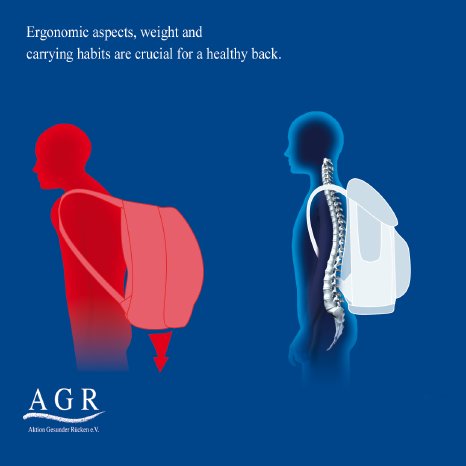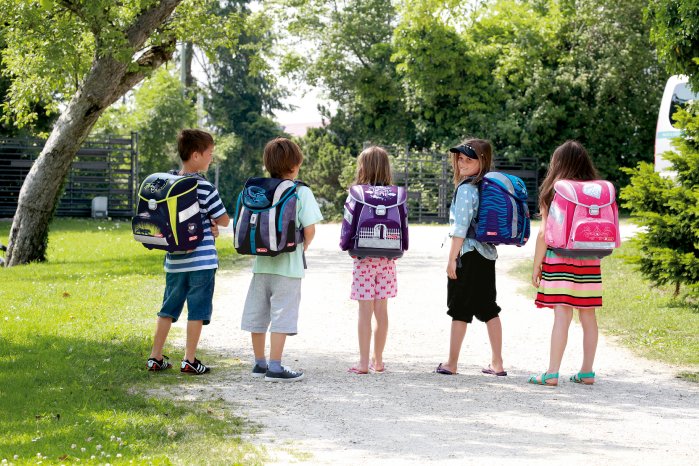Just before school begins, scarcely any other topic occupies parents, grandparents and guardians quite as much as the issue of the "right" satchel or school rucksack. And there's so much to be clarified. Which is the best product for our child? Which weight can the growing child really be expected to carry? And the most important question for tomorrow's school beginners: What should a satchel look like?
Listening to expert advice is the best way to avoid making the wrong decision. And experts know all about it. The recommendations for satchel/rucksack weights not to exceed 10 to 12% of the child's bodyweight are completely obsolete. They result from a scientific misinterpretation. Dr. Dieter Breithecker, head of the BAG (Federal Consortium for Posture and Exercise) in Wiesbaden explains: "The 10% recommendation originates back to before the First World War. It referred to the maximum weight for the recruit's knapsack to rule out the risk of muscular fatigue under sustained loads." But sustained loads referred to marching for distances of 20 kilometres and more. Today's school children don't have to walk nearly half as far to get to school, which is why this rule certainly doesn't apply to them. "It's completely unrealistic to use this value for school children and their satchels", criticises Breithecker. This is also confirmed by the Kid Check Study conducted by Saarland University. The researchers came to the result that it simply isn't possible to use one and the same rule for all children. Some children won't experience any kind of physical exertion until the satchel weighs one third of their body weight. But weaker children will be quite apparently overtaxed by carrying 12% of their bodyweight. It is therefore vital to take individual factors into consideration. These include for example load compatibility (strength and coordination ability), load time, ergonomic quality of the satchel/rucksack, individual carrying habits and other so-called risk factors, such as sitting frequency. "Even if current findings indicate that satchels may be heavier, it is still important to make sure that no unnecessary heavy items are carried in the satchel. But when buying a satchel, it is important to know that the lightest satchel is not necessarily the best", says Detlef Detjen, AGR Board.
What matters for satchels/rucksacks
It must be presumed that the child is always particularly susceptible to incorrect strains and stresses as long as the child's posture and locomotor system is still in the development phase. This makes it all the more important to pay special attention to ergonomic everyday commodities such as satchels during childhood. Important requirements include for example an ergonomically shaped non-slip back section adapted to the natural shape of the spine. When buying a satchel, it should also fit snugly to the body. Is it possibly too high or too low? Well-padded adjustable straps at least 4 cm wide will make it more comfortable to carry the satchel every day. It should be possible for heavy items such as books to be stored in compartments close to the body. Other important tips, information and criteria for a back-friendly satchel can be found on the internet at www.agr-ev.de/schulranzen
Since it was founded in 1995, the AGR has taken up the task of promoting an awareness for the significance of creating back-friendly conditions in order to avoid posture defects and backache, particularly also in children. Together with active information activities, the AGR has also awarded the "certified and recommended" seal of approval for particularly back-friendly school satchels and rucksacks made by Coocazoo, Die Spiegelburg, Sammies by Samsonite and Step by Step.



